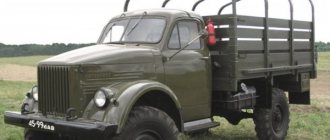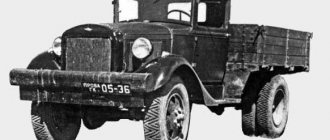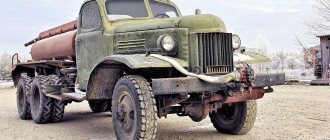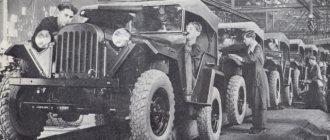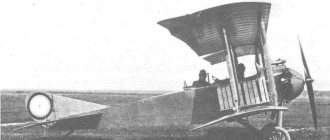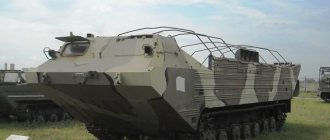In the USSR, almost every leader of the country used his own model of a limousine for transportation, created by the designers of the Likhachev plant. For N.S. Khrushchev created the ZIL-111, the design of which used “aerospace” contours, which were widely used in the global automotive industry in the late 50s.
The arrival of the new Secretary General L.I. Brezhnev pushed the plant to create the ZIL-114 limousine, the design of which had no analogues among the American automobile industry. The vehicle contained a lot of new layout and design solutions that had not previously been used by the ZiL plant.
general information
Domestic designers looked towards American premium cars, as their design was considered the standard in the automotive world. In the early 60s, their style changed dramatically: a strict style with angular bases began to predominate.
In this regard, the 111th model, which was used to transport the country's top officials, began to lose relevance. At this time, the design of the 114th car began. It was based on the best design trends of the time.
The prototype was assembled in 1965 and went for testing. A year later, they organized piece-by-piece assembly, and in 1968, the transport took over the line of premium cars of the USSR. In 1971 there was a slight restyling. It mostly touched the front of the car.
ZIL-114 Fuel consumption Weight Overall dimensions
When Leonid Ilyich Brezhnev became the General Secretary of the CPSU Central Committee, the first person of the Soviet Union, ZIL, according to tradition, presented a new limousine - and, it seems, finally found its style. For the first and last time, automotive historians agreed that the “Soviet car” bears no resemblance to any of its contemporary American cars. The car has become much lower, while being longer and wider than its predecessor.
Design
Transport critics were pleased with the presence of innovative solutions at that time. These include disc brakes on all wheels, the ability to adjust the steering wheel height and suspension on torsion bars of a pinless type. The rear passenger seats were separated from the driver's section by a glass partition that could be opened electrically. For the first time, a central locking system was implemented. All window lifters were electrically operated. To ensure comfortable temperature conditions in the cabin, the device included an air conditioner. Dethermal glass prevented the sun's rays from heating the interior.
The ZIL-114 engine has a volume of 7 liters and develops up to 300 horsepower. There is enough power to accelerate to 190 km/h. The power unit consists of aluminum cylinder blocks, a carburetor (consists of four chambers activated in series), a transistor ignition system and a hydraulic valve lifter. The operation of the power plant was complemented by an automatic transmission. Despite this, the driver could choose the desired speed himself. The steering mechanism is equipped with a hydraulic booster.
The chassis is based on a strong peripheral frame. The suspension provides smooth operation without shocks during sudden acceleration or braking. There is no roll when entering a turn at high speed. The front suspension of the pinless type is equipped with longitudinal torsion bars that work torsion. They were placed along the frame side members. Their main purpose is the axles of the lower suspension arms. The dependent rear suspension has a standard design: it operates on the basis of longitudinal leaf springs. The braking mechanism consists of a cascade system of amplifiers and separate circuits.
There is a noticeable change in the design: it began to correspond to a strict style, based on angular outlines. The body is attached to an X-shaped frame with side members of a volumetric section. This device provides the frame with increased strength. The Likhachev plant produced about 150 copies of various modifications. One of the most popular was the option with a large hatch above the passenger seats. It was used to greet the public at parades and holidays. Based on the standard model, a pickup truck was developed for use in the film industry.
History of creation
Created in the late 50s, the government limousine ZIL-111 quickly became outdated, despite cosmetic modernization carried out in 1962. To develop a new car, a separate design group was created under the leadership of V.F. Rodionova.
The first steps to create a limousine were taken already in 1962, when the development of an engine with an aluminum cylinder block capable of working with a 2-speed automatic transmission from the ZIL-111 began. The increased torque led to rapid failure of the hydraulic transformer and planetary gears, so in 1966 work began on a new 3-speed gearbox.
The unit came into production only in 1975; it was installed on ZIL-114 vehicles for only 3 years.
In 1966, 3 prototypes of the ZIL-E114 limousine were assembled, and the first car used 4 rectangular headlights. The rest had round optics, which went into production. Already in the fall, the tested prototypes were shown to L.I. Brezhnev, who approved the design of the car, and in 1967 the assembly of production samples began.
Early production ZIL-114 vehicles were equipped with decorative covers in the rear arches, but later this element was abandoned. For the first time, the ZiL plant's corporate logo appeared on limousines in the form of a stylized inscription inscribed in a rectangle.
Engine
The power unit is the only element that was not developed from scratch as part of the 114th model project. Its construction began in 1962. The main difference from previous developments is that the cylinder block is made of aluminum. The designers took this step to reduce the weight of the engine. Hydraulic valve tappets are integrated into the device to eliminate the need to adjust the timing gaps. It worked in conjunction with a four-barrel carburetor and a transistor ignition system. As a result, the engineers received 300 horsepower, which is 100 more than the previous generation.
Technical characteristics of the ZIL-114 car:
- Length - 6.3 meters;
- Width - 2 meters;
- Height - 1.5 meters;
- Wheelbase - 3.9 meters;
- Ground clearance - 17 centimeters;
- The volume of the power unit is 7 liters;
- The power of the power plant is 300 horsepower at 4.4 thousand rpm;
- Maximum torque - 559 Nm at 2.8 thousand rpm;
- Transmission - automatic;
- Acceleration to 100 km/h - 13.5 seconds;
- Average fuel consumption is 19 liters per 100 kilometers;
- Maximum speed is 190 km/h.
When work was carried out on the power plant, it was not immediately planned to be used in other civilian or military vehicles. This is due to being powered by high-quality high-octane gasoline and adapting to work with a unique automatic transmission. The automatic transmission was transferred to the 114th model from the 111th family, but practical use with a powerful engine revealed a number of shortcomings. To eliminate them, it was necessary to develop a new unit with a completely new device. Instances with the new gearbox entered the assembly line in 1975.
Description of design
At the heart of the ZIL-114 car is a frame chassis welded from box-section elements. The front wheels are equipped with transverse torsion bars on which the lower arms are attached. Additionally, hydraulic telescopic shock absorbers and a stabilizer are installed. The arrangement of the swing axes of the lower and upper arms ensures a reduction in body dive during sharp deceleration.
The rear uses asymmetrical 4-leaf semi-elliptical springs with additional reaction bars and telescopic shock absorbers.
The design includes rubber bumpers that limit suspension travel. All wheels are equipped with stamped steel wheels 7.0L-15 and tubeless IL-126 tires size 9.35*15. In winter, special studded tires IL-137 were used.
The steering gear of the ZIL-114 car is built according to the “screw-nut-gear sector” scheme; a hydraulic piston amplifier is integrated into the design. The kinematic steering system includes a pendulum lever and a trapezoid. A hydraulic damper is used to prevent wheel kickback. The steering column is equipped with a tilt mechanism, which makes it easier for the driver to get in and out of the car. Additionally, there is a steering wheel height adjuster.
The ZIL-114 car is equipped with an all-metal closed body designed to carry 7 people. The middle row consists of 2 individual seats of a simplified design, which fold into niches made in the floor of the body. Behind the back of the front seats, which, unlike the rear rows, had leather upholstery, there was a partition with curved 3-layer electrically lowered glass.
Based on the limousine, a simplified ZIL-117 sedan was produced, designed to accommodate 5 people.
The partition was not used on such a car. To install the body on the chassis, 35 bolts with rubber washers are used.
The windshield had a darkened strip located on top. The rest of the glass is safety glass, covered with a layer of special paint that provides thermal insulation for the interior.
The standard equipment of ZIL-114 vehicles included a vacuum door lock drive system controlled from the driver's seat. Air ducts supply warm air to the windshield, as well as to the glass located in the rear of the body sides.
The air conditioner is equipped with 2 heat exchangers, which separately serve the driver's compartment and the main salon of the limousine. For additional ventilation, rotating windows are used, located in the front doors of the limousine. The rear windows in the side of the body can move horizontally.
The ZIL-114 car is equipped with electric drives for windows and front seats, and the external rear-view mirrors are remote controlled. By default, inertia-free seat belts were installed for the front and rear row seats.
The left armrest of the rear sofa, covered with velor, of the ZIL-114 car contains drives for controlling the interior heating system, air distributor levers and a fan speed controller. Inside the right armrest there is a remote control for adjusting the radio settings. The rear window defroster controls and air intakes are located on the shelf behind the backrest of the rear row of seats.
All built ZIL-114s were equipped with an AV-68 transistor receiver with an automatic tuning system.
The receiver is equipped with 2 control panels and 3 loudspeakers are installed to broadcast music. The antenna is manually operated from the interior and is located above the windshield.
The ZIL-114 car is equipped with a gasoline V-shaped 8-cylinder engine with a camber angle of 90⁰. To increase power and reduce fuel consumption, a wedge-shaped combustion chamber is used. With a working volume of 6.96 liters, the unit develops a power of 300 hp. at 4400 rpm. The block is made of aluminum alloy, the working surfaces of the cylinders are formed by quick-release cast iron liners. The cylinder heads are made of aluminum alloy, each cylinder has 1 intake and 1 exhaust valve.
The gas distribution mechanism is driven by a single shaft located in the camber of the blocks. A silent Morse chain is used to drive the camshaft. The valve drive uses hydraulic clearance compensators, which reduce the labor intensity of maintenance and noise during operation.
The ZIL-114 car engine is equipped with a transistor ignition system. Some limousines were equipped with an additional vibrator-based system used in emergency situations.
The compression ratio is 10.5, and “Extra” grade gasoline is used as fuel, having an octane number of 95 units. The fuel supply is stored in a fuel tank with a capacity of 120 liters, located under the trunk floor. The engine was equipped with a 4-chamber K-254 carburetor with a falling mixture flow and an idle speed accelerator.
Exhaust gases are removed through 2 individual manifolds with 3 mufflers in each.
The cooling system is liquid type, equipped with an expansion tank. A fabric curtain with manual position adjustment is installed in front of the radiator. The cooling system includes an oil cooler located directly in the water jacket of the cylinder block.
The hydraulic transmission heat exchanger is installed in the lower tank of the main radiator. To supply air through the radiator honeycombs, a 6-blade fan with a permanent V-belt drive from the crankshaft is used. A diffuser is placed around the fan to improve cooling performance. The radiator design includes additional heat exchange plates made of red copper.
Torque is transmitted from the engine by a hydraulic transmission consisting of a transformer and a planetary gearbox. The gearbox has low and forward speeds, and also allows the ZIL-114 vehicle to move backwards. The driver can forcibly control the box using a set of buttons located on the instrument panel; later a selector began to be used. Between the box and the rear axle there are two hollow cardan shafts with additional bearing support.
The rear axle beam of the ZIL-114 car is built according to the “banjo” design and contains a hypoid main gearbox, a differential and 2 semi-axles of a partially unloaded type.
To stop the ZIL-114 vehicle, ventilated disc brakes with automatic gap compensation are used. The drive includes a vacuum type amplifier, and additional hydraulic vacuum amplifiers are located in each of the 2 circuits. Each of the independent circuits ensures the transmission of braking force to all wheels of the limousine.
Inside the brake discs of the rear wheels there are drum mechanisms for the parking brake, which is mechanically driven from a separate pedal.
When the gear is engaged, the drive is automatically switched off, provided by a vacuum diaphragm. If necessary, the parking brake is turned off by a special release located under the instrument panel.
History of the medical option
In 1972, Leonid Ilyich Brezhnev suffered his first stroke. For the safety of his health, a transport was required that would carry medical equipment “on board” for first aid. The main requirement was to preserve the appearance, which fit into the government motorcade. The development was based on the ZIL-114. The main task of such a car was to comfortably and quickly transport the general secretary to the hospital if necessary.
The equipment was at the level of a basic ambulance. The crew always included several doctors. Brezhnev's health condition was carefully concealed. That is why the state “ambulance” did not have distinctive features from the general style of government transport. Crew doctors were forbidden to wear traditional white coats so as not to reveal the purpose of the machine.
At the same time, a state order was placed for the creation of a medical ambulance at the Chaika base. Such cars were intended to transport ordinary officials to the hospital. The main difference between the two ambulances is the number of copies produced. Only one ZIL-114E was produced, and about 15 Seagulls were assembled.
The developers needed to create a station wagon out of a limousine so that all medical equipment could be included. The length of the car frame made it possible to do this with minimal changes in the design, but in reality everything turned out to be more complicated. The frame took on part of the power loads. A simple change in the position of some technical components would lead to a violation of the rigidity characteristics. Engineers had to reconsider the body structure and rework the layout. Inside the cabin, from the backs of the front seats to the trunk lid, a base for a stretcher, three seats for doctors and drawers for storing medical supplies were placed.
Another problem was a small detail - storing the spare wheel. Previously, it was placed in the luggage compartment, but it was abolished in the medical car. It is unacceptable to refuse a spare tire in a car of this class. An original solution was found - the spare wheel and tools were placed in a vertical niche, which was located behind the left door. The storage room in the cabin did not stand out in any way; it blended in with the medical lockers.
Doctors entered the salon through the right door. Two seats were installed close to the partition with the driver's side facing the direction of travel. The third seat was placed on the starboard side near the door, it was located in the direction of travel. The base for the stretcher was shifted towards the left side.
The prototype was assembled in 1974. The main difference from the standard version (apart from being converted into a station wagon) was the presence of a metal protrusion on the roof. It is made to increase the free space of the cabin. The doctors could not stand up to their full height, but it was made easier by interacting with the necessary medical equipment. The add-on also made it easier to move the stretcher in and out of the body.
Expensive gray leather was used to decorate the interior. The same material was used in the classic limousine. The medical modification accommodated six passengers: a driver, a security guard, three paramedics and a bedridden patient. The base of the stretcher is made of leather. Innovative resuscitation and cardiological equipment was used to equip the transport. The weight of the equipped vehicle was 4,800 kilograms, empty - 3,900 kilograms. The operating experience is considered successful, since after the development of subsequent government limousines, the country's leadership placed an order for their adaptation to a medical version.
Application
In total, the ZIL plant assembled 113 ZIL-114 vehicles, which were supplied to the Special Purpose Garage to serve senior party officials of the USSR. The simplified 5-seater ZIL-117 sedan was intended for transporting less important persons, as well as for escorting motorcades.
Reduced dimensions and weight made the car more dynamic, although the maximum speed increased by only 10 km/h. After L.I.’s health deteriorated. Brezhnev, a special version of the ZIL-114A with a station wagon body was created. Inside there were places for a team of doctors and guides for installing a stretcher. The ZIL plant produced 2 cars in 1974.
For parades on Red Square, 2-door ZiL-117V convertibles were used, which were equipped with sound transmitting equipment and a raised platform on the floor located behind the back of the driver’s seat. A total of 3 of these cars were assembled, which were painted gray-blue. Additionally, the plant produced 5 standard 5-seater black convertibles.
In the early 80s, the decommissioning of ZIL-114 vehicles began, some of which were supplied to various government agencies.
On the basis of one limousine, Mosfilm built a film-making machine, the rear part of which was dismantled. There is an additional platform at the front for mounting the camera and placing the operator. The car is still used by the company today.
What can be concluded?
ZIL-114 is a car legend of the USSR. This is not only a beautiful and representative car, but also reliable and durable. The service life was several hundred thousand kilometers without major repairs. Each copy of the series was equipped with unique parts that were made by hand at the Likhachev plant.
It is practically impossible to buy such a car in our time. The remaining copies are in museums and private collections. Many car enthusiasts are desperately searching throughout the country for preserved cars in order to purchase them and carry out a complete restoration to their original appearance.
History of appearance
Few people know that the corporate emblem of the Likhachev Plant appeared only thanks to the ZIL-114 limousine. Before this, all the emblems of ZIS-ZIL cars were different, and the plant’s letterheads only contained images of medals that were awarded to the plant in different years. The ZIL emblem, which became official for many years, was created by the talented body designer I. Sukhorukov. He came up with it for the ZIL-114 limousine.
Most likely, it would have remained only on the ZIL-114, but the deputy head of the experimental workshop of the plant, Materov, really liked it. He made every effort to ensure that this emblem was chosen as the official logo of the plant. To do this, he persuaded the workers to produce a small batch of badges with the emblem, and called the director of the plant, Borodin, to a kind of presentation. The director liked the emblem and signed an order assigning it official status.
The emblem was approved on January 15, 1972. This date is considered the birthday of the official logo of the Likhachev Plant.
Design of ZIL-114
Comfortable movement was ensured by a fully hydraulic suspension, which did not allow potholes on the roads to disturb the important passenger. The basis of passenger safety was considered to be the X-shaped structure of the car frame, which has side members with a volumetric cross-section. This architecture provided greater resistance to possible deformations and damage.
Innovations include disc brakes on all wheels, the ability to adjust the steering wheel in height and suspension on pinless torsion bars.
Salon ZIL-114
The air in the cabin was cooled by an air conditioner. The passenger compartment could be separated from the first row of seats, where the driver and a representative of the personal guard were usually located, by soundproof glass, which also had an electric drive. This allowed passengers to discuss important government affairs or conduct telephone conversations over government communications while driving.
The rear passenger seats were separated from the driver's section by a glass partition that could be opened electrically. For the first time, a central locking system was implemented. All window regulators were electrically operated. To ensure comfortable temperature conditions in the cabin, the device included an air conditioner. Dethermal glass prevented the sun's rays from heating the interior.
